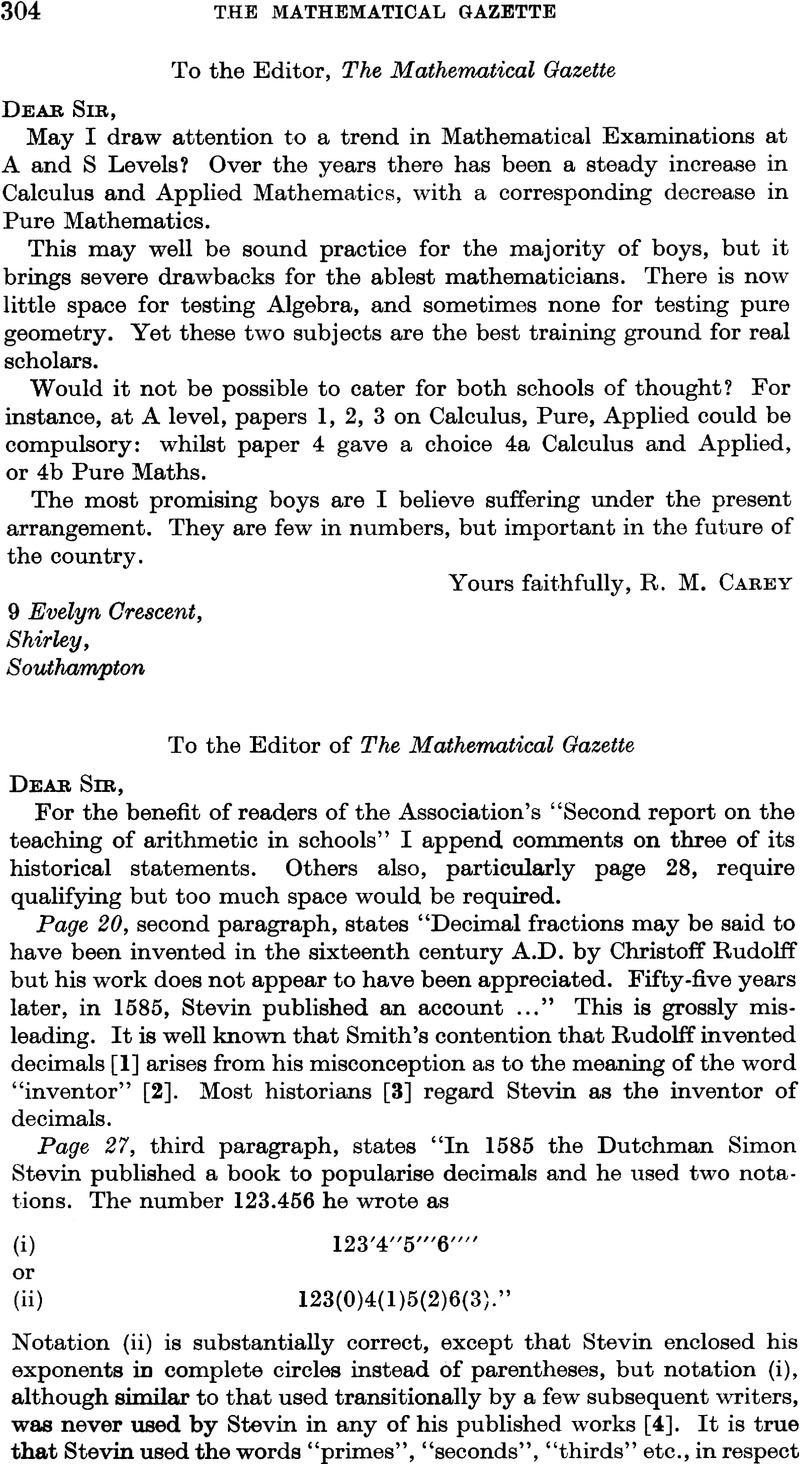No CrossRef data available.
Article contents
To the Editor, The Mathematical Gazette
Published online by Cambridge University Press: 15 September 2017
Abstract
An abstract is not available for this content so a preview has been provided. As you have access to this content, a full PDF is available via the ‘Save PDF’ action button.

Information
- Type
- Correspondence
- Information
- Copyright
- Copyright © Mathematical Association 1965
References
2. For a discussion of this word in the present context see, for example, Depau, Rob., Simon Stevin, Brusselles
1942, p. 62. B.M. Ac988eb/5.Google Scholar
3.
Sarton, e.g., Isis, G.
23, p. 173, “I cannot agree (with Smith)”. Cajori, F. A History of Mathematical Notations, 1928, Vol. I, p. 314 “The invention of decimal fractions is usually ascribed to the Belgian Simon Stevin, in his ‘La Disme’”.Google Scholar
4.
The British Museum collection is very good and includes, in particu;ar, L’Arithmetic, 1585 (which includes La Disme), C74a2, De Thiende, 1585, C54ell and Albert Girard’s Les Oeuvres de Simon Stevin, 1634, 530m12.Google Scholar
5.
Disme, La “Comme 3 1 7 2 5 3 9 4 c’est à dire, 3 Primes 7 Secondes 5 Tierces 9 Quartes; & ainsi se pourroit proceder en infini.” etc. For a complete translation of La Disme see Smith, D. E., A source booh in Mathematics, 1929 (Dover reprint
1959).Google Scholar
6.
Yeldham, F. A., The teaching of arithmetic through 400 years, 1936, p. 86. It is interesting to note that Ball, W. W. Rouse made a similar error in his Short account of the history of mathematics, 4th Ed. 1908 (Dover reprint 1960), p. 197.Google Scholar

